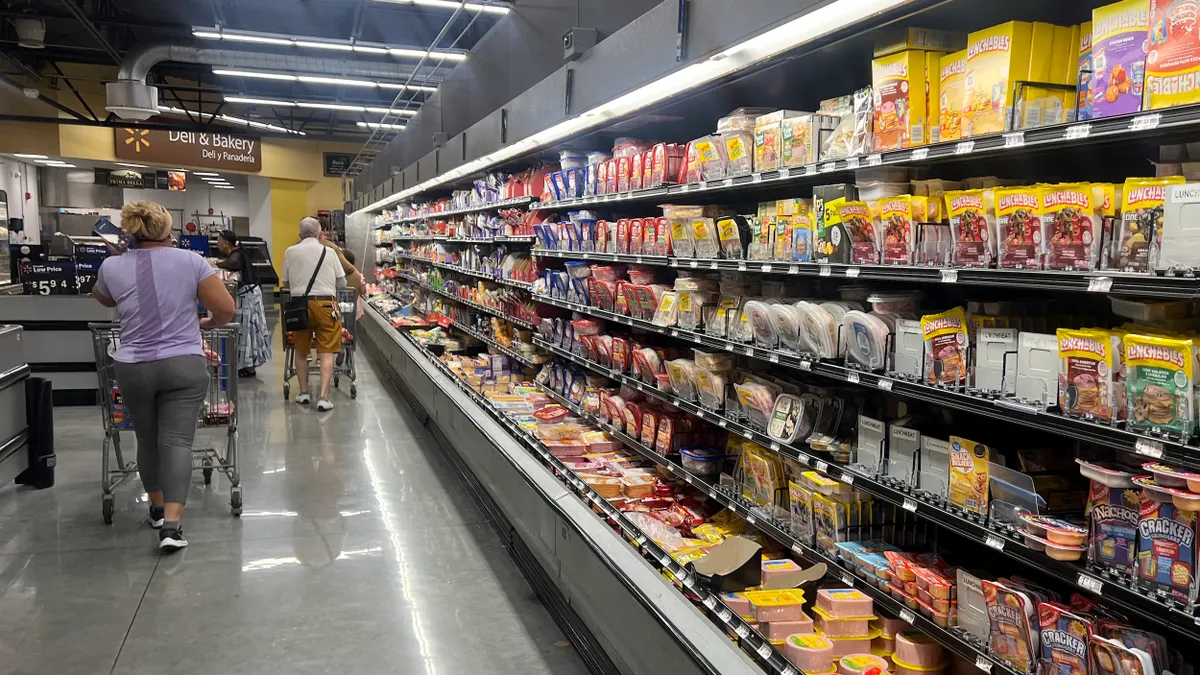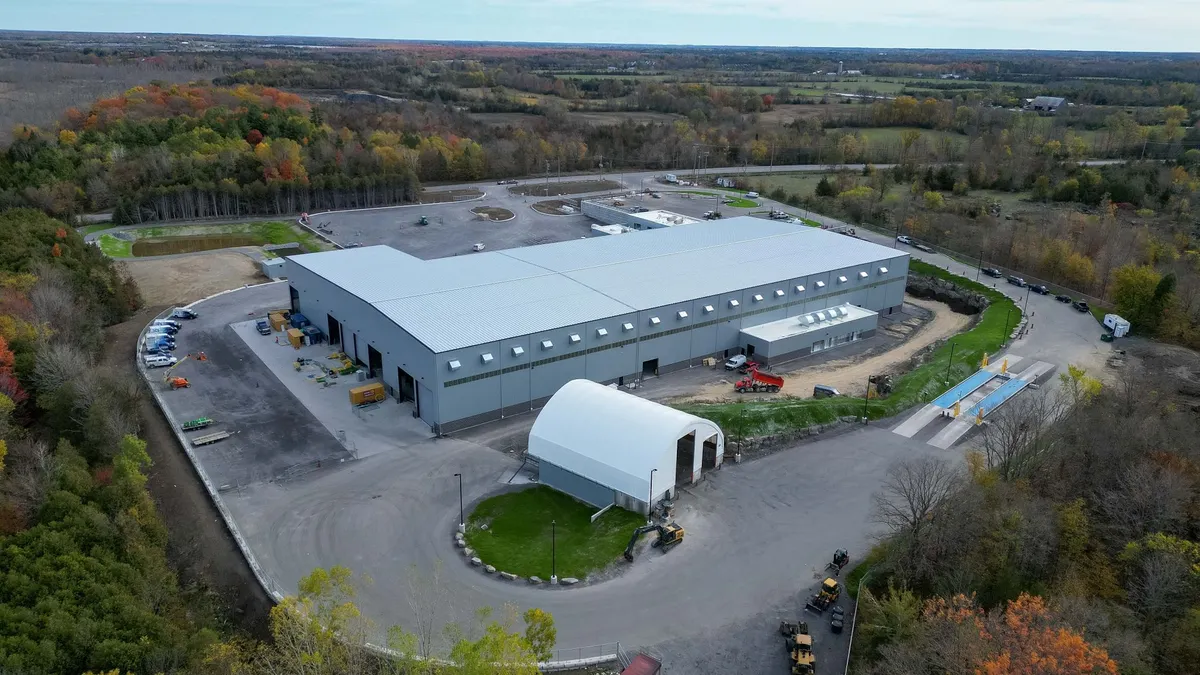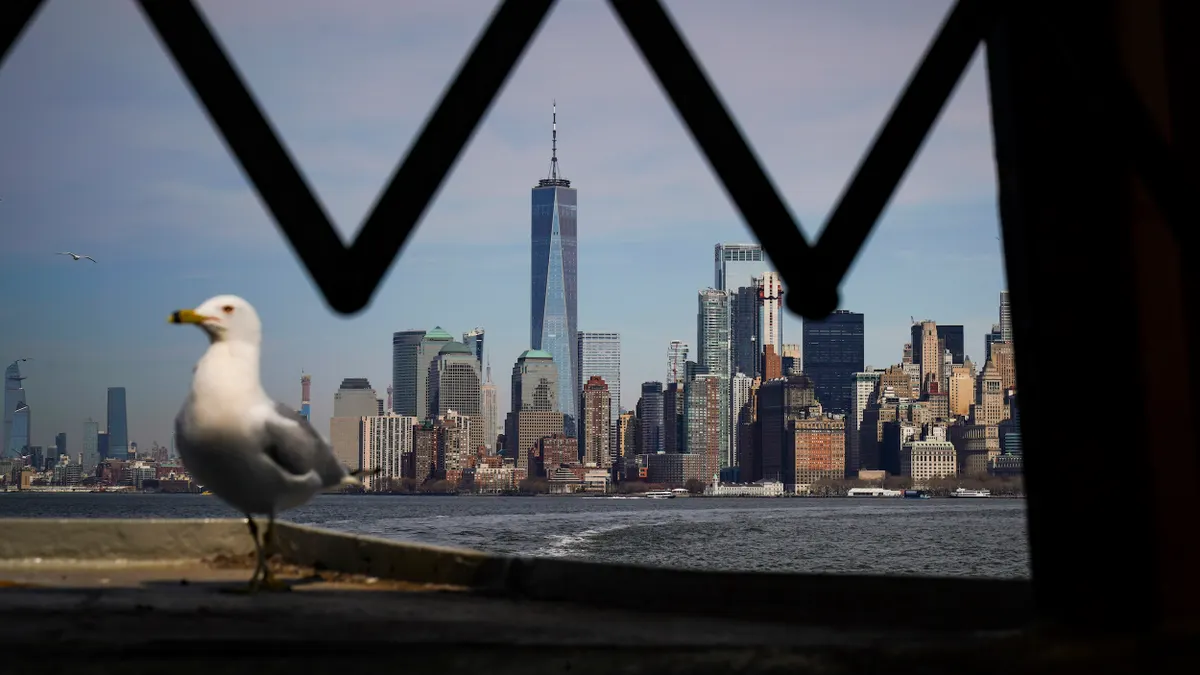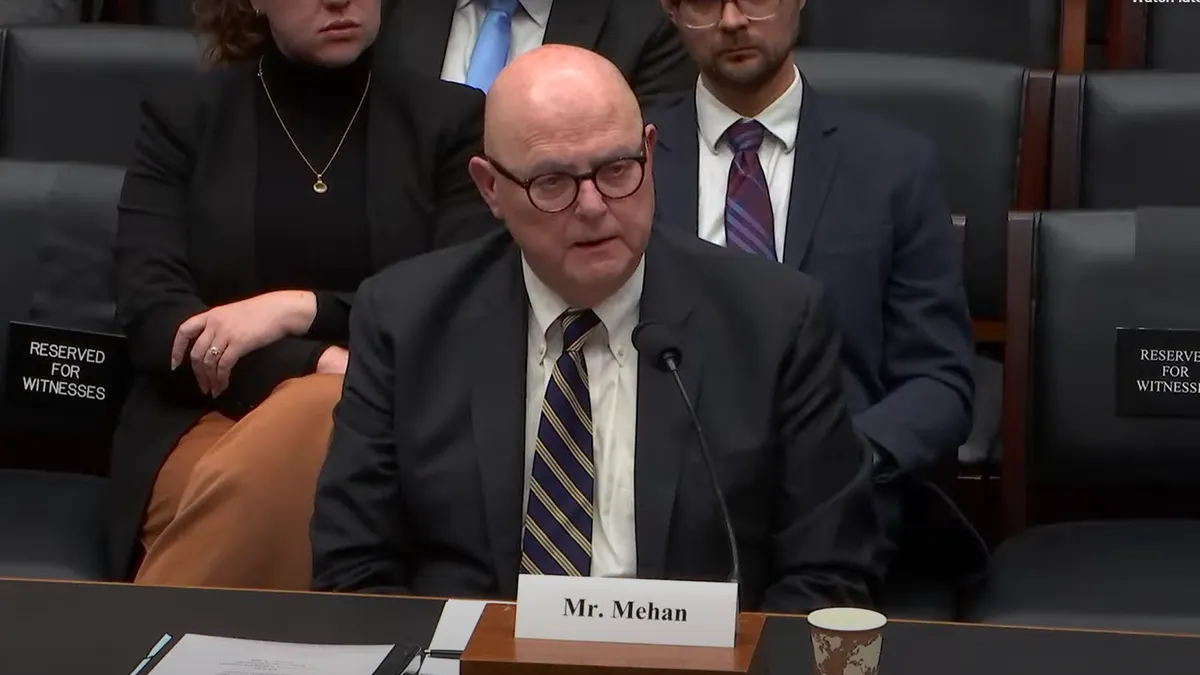Editor's Note: This is the first of a two-part story. Read part two on recycling here.
The debate over reforming New York City's commercial waste industry has been simmering for more than a year and recent headlines have escalated it even further. As the city continues to pursue big zero waste goals, it seems inevitable that private carting companies — which have long operated out of the public eye — are in for some changes.
What those changes should be, when they should happen or how they should be enforced, is where things get complicated.
The campaign Transform Don’t Trash NYC (TDT) is calling for an exclusive franchise zone system. This would require companies to meet certain recycling, safety, and efficiency standards in order to get collection contracts.
On the other side, CleaNYC — a coalition of Laborers Local Union 108 and a few major private carting companies — disagrees with zoning, but supports the idea of an internal system that holds companies accountable. The National Waste & Recycling Association (NWRA) says that anything except the current open market system would be bad for customers and could put members out of business.
The Business Integrity Commission (BIC) and the Department of Sanitation (DSNY) have been conducting a study since last year to try and clarify the situation. DSNY has confirmed that the study should be finished later this spring.
Ahead of the study’s release, and the legislative discussion that will ensue, Waste Dive breaks down what we know so far.
Examining the data
One of the most common critiques of the city's commercial waste system is that it is separate and unequal from DSNY’s residential system.
"It’s an invisible industry," said David Newman, an industrial hygienist at the New York Committee for Occupational Safety and Health (NYCOSH). "This collection is done at night, people are asleep. Nobody thinks of these workers."
NYCOSH sought to change that earlier this month when it released a scathing report by Newman called "Dirty and Dangerous." The 50-page document argued that the industry lacks proper training and safety protocols, resulting in frequent injury and sometimes death.
Stories of eight men being struck by vehicles, crushed in a compactor, hit by a dumpster, asphyxiated in a well, and collapsing from heat illness between 2005 and 2015 were described in great detail. A picture of one worker's amputated finger was prominently displayed at a press conference announcing the report on the steps of City Hall.
The local NWRA chapter did not hold a press conference or make an official public statement in response. NWRA’s New York City Chapter Manager Kendall Christiansen told Waste Dive these stories are not representative of the industry as a whole.
"Safety of both employees and the public is a paramount concern for New York City’s private waste management companies; we need our workers coming to work every day and going home healthy," Christiansen wrote in an emailed statement. "The NYCOSH report repeated news about singular incidents over an extended period, but didn’t find evidence of lack of attention to safety."
The challenge with proving negligence lies in the lack of comprehensive, specific safety data on New York City’s private carters. Out of the whole report, the one number which seemed to get the most media attention was that 71% of workers said they had been injured on the job. This number came from a non-scientific survey of 34 people.
Another striking statistic was that 85% of solid waste collection fatalities occur in the private sector — a number that comes from a 2012 report by the National Institute for Occupational Safety and Health. The report says that this statistic was for 2003-2009 and the private sector "experienced a substantial drop in the number of fatalities" after that. Further review of the data — sourced from the Bureau of Labor Statistics (BLS) — showed that the number of private sector fatalities has fluctuated since 2009, though does remain lower.
Looking at the specific category of "solid waste collection" for 2014, there were 27 private fatalities and 13 public fatalities. BLS said that accurate comparisons between public and private fatalities can’t be made without knowing the total workforce in each section.
When drilling down to the closest occupation title, "refuse and recyclable material collector," a comparison can be made for non-fatal injury rates. In 2014, private sector jobs with this title had an injury rate of 323.7 per 10,000 workers — more than three times the average rate for all private industry jobs. Yet in the local government sector, the job had an injury rate of 654.8 per 10,000 workers — nearly four times more than the average for government employees. The majority of injuries in both cases are classified as "sprains, strains, tears."
Combining public and private workers, BLS consistently ranks the occupation as one of the top five most dangerous in the country. Approximately 30% of reported injuries resulted in employees missing more than one month of work.
Tony Hargis, NWRA’s national safety director, said these kind of statistical factors show the industry is more complicated than the NYCOSH report makes it out to be. He didn’t deny the hazards of the job, but disagreed with the report's premise.
"It doesn’t make sense for any employer to injure their employees," said Hargis. "The belief that there’s employers out there that just don’t care is patently illogical."
Newman disagreed and said that his research found enough to prove NYCOSH’s overriding point that employers are allowed to operate in unsafe workplaces even after they’ve been issued citations. New York City's commercial waste industry is technically governed by a variety of federal, state, and local agencies, which makes enforcement difficult.
"We can’t really pin this on a person or an agency," said Newman. "It’s the regulatory framework as a whole that’s inadequate."
Is zoning a safety solution?
While recognizing that no one agency can solve this puzzle, reform advocates have been looking to BIC as the logical choice for increased enforcement — ideally in a zoning system.
"If the agencies already have the power to work in commercial waste, to us they’re the ones who are the best suited to help bring up the standards in the industry," said Brigid Flaherty, organizing director for the TDT campaign.
NYCOSH has called for the agency to be more strict when approving or renewing trade licenses. The report recommends adopting a list of specific safety standards — such as the elimination of riding steps on trucks — as requirements for operating in the city.
A representative from BIC said they are currently reviewing the NYCOSH recommendations and that the agency already takes OSHA violations into consideration. If an applicant fails to disclose a violation of $5,000 or more, or hasn’t paid it, that will reflect on whether the company "lacks good character, honesty, and integrity." Under the agency’s regulatory legislation, these criteria are the main standard which BIC uses in its decision-making process.
Industry representatives tend to shy away from the idea of increased regulation, but they do agree with reform advocates on one point — the importance of proper training. Unlike DSNY employees, who undergo a rigorous, standardized course before they ever hit the streets, not every private company has the same requirements.
Therefore Laborers Local 108 teamed up with Action Environmental Services, Filco Carting, and IESI to form a coalition called CleaNYC with the goal of changing how training is handled.
Mike Hellstrom, business manager for Local 108, compared the program they envision to Waste Management’s "Mission Zero" campaign. He would like to see employees get paid to take classes outside of the workplace on everything from OSHA basics to bloodborne pathogens to confined space entry.
"There has to be a stronger emphasis on making sure workers receive proper accredited training and that they’re going into a safe environment every single day," he said. "There should be no price tag on safety."
NWRA has also been actively working to promote safety measures — such as its recent Safety Stand Down series — for any company, even if they’re not a member of the organization. They will be holding a "safety symposium" — co-hosted with SWANA, DSNY, and BIC — in NYC on June 16 to help spread the word. The organization said this was not organized in response to the NYCOSH report. A review of meeting minutes from BIC’s Trade Waste Advisory Board show that the idea was first mentioned as early as February.
While positive about the emphasis on safety, at least one key elected official is skeptical of changes.
"To be honest, I don’t think that we should allow for the industry to set these standards independently," said Antonio Reynoso, chair of the City Council’s sanitation committee. "This self-policing model will never work."
Reynoso said he's seen some companies make good efforts, but doesn’t think true reform is possible without city action and hasn’t ruled out new legislation if necessary.
Regardless of what ends up happening to their industry, the commercial waste workers who are out on New York City’s streets every night can at least take solace in one thing — this focus on safety isn’t going away any time soon.


















